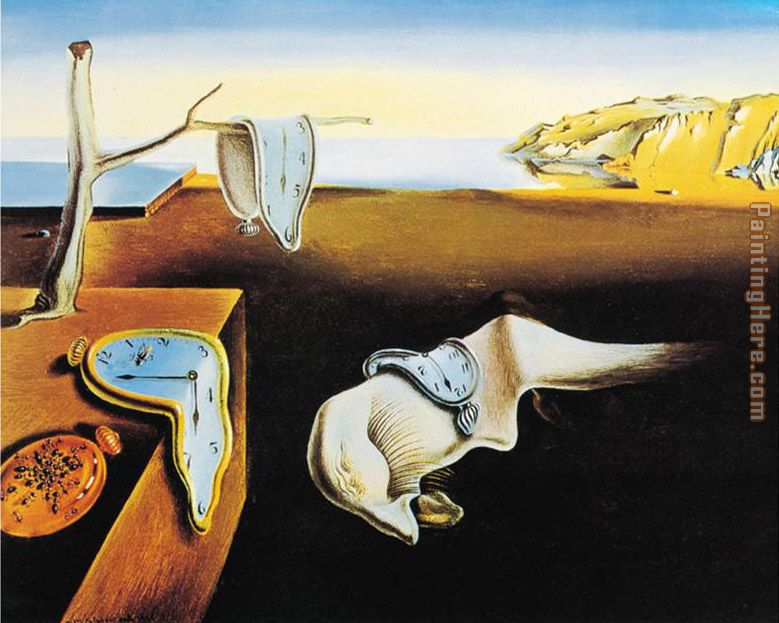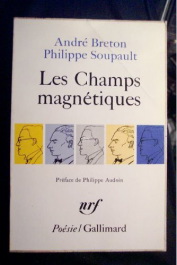surrealism (səˈrɪəˌlɪzəm) - a movement in art and literature in the1920s, which developed esp from dada, characterized by the evocative juxtaposition of incongruous images in order to include unconscious and dream elements
-World English Dictionary
The word 'surrealism' comes from the French word 'surréalisme' (sur, meaning beyond + réalisme) and was first used in 1917 by writer Guillaume Apollinaire, describing the artistic innovation of Jean Cocteau’s ballet Parade.
Surrealism is a cultural movement that emerged in Europe in the 1920s, after the first World War. The movement quickly spread and affected works in literature, arts, music, photography, and even political and philosophical theories. Surrealism grew out of the earlier Dada movement, which aimed at protesting against the bourgeois culture and colonialist interests by using an early form of Shock Art; using obscenities, visual puns and scatological humour.
Surrealist art was all about expressing the subconscious mind and creating works with dreamlike qualities. It is often free from any understandable meaning, as the work was a means of exposing the artists inner mind in a bizarre and inconceivable manner.
"Surrealism, n. Pure psychic automatism, by which it is intended to express, whether verbally or in writing, or in any other way, the real process of thought. Thought's dictation, free from any control by the reason, independent of any aesthetic or moral preoccupation." - André Breton
Surrealism in painting
Surrealism is most easily recognised in paintings and drawings, as the medium is very conducive to dreamlike imagery. As the golden age of surrealism was throughout the 1930s, photography and film was only beginning to emerge outside of the specialist realm, so surrealist paintings and sculptures were much more common at the start of the movement. Salvador Dali and René Magritte are two of the most influential surrealist painters, and have many famous works.


Salvador Dali - The Persistence of Memory
Dali's painting of melting clocks is one of the most famous surrealist work ever created, and is often referenced in popular culture. This painting tends to be the universal symbol for surrealist art. "People love mystery, and that is why they love my paintings." - Salvador Dali

René Magritte - The Treachery of Images
This is a famous painting by René Magritte, underneath it is written "This is not a pipe". This image became famous as the paradox is confusing and it makes you think about what Magritte is on about. As Magritte pointed out "The famous pipe. How people reproached me for it! And yet, could you stuff my pipe? No, it's just a representation, is it not? So if I had written on my picture "This is a pipe," I'd have been lying!".
Surrealism in literature
The first surrealist literature was written in 1919, by surrealist leader André Breton and was titled Les Champs Magnétiques (The Magnetic Fields). It was written in a surrealist automatic writing style, and was characterized by rich nonsensical language. Surrealist writing also stems into the writing of films and theater productions.

André Breton - Les Champs Magnétiques
Surrealism in music
Surrealist music is most often characterized by the random juxtaposition of instruments, often in jarring and irregular ways. Various surrealist operas have been written, and the ballet Parade by Jean Cocteau was considered the first surrealist work ever done.
Edgard Varèse - Arcana
Surrealism in photography
The major difference in the content of surreal photography compared to surreal paintings is that in order to photograph something, it has to physically exist. This means in order to create a surreal image we must either capture the scene in a way that makes it seem 'unreal' or distort it with post processing techniques. The first famous surreal photographer was Man Ray who was best known for his photograms (or as he called them 'rayographs'), in which he would place random objects on developing paper and expose it, thus resulting in silhouettes of the objects he used.

Man Ray - Rayograph with Sprockets
As technology advanced, modern surrealist photographers quite often use photoshop in order to create dreamlike qualities in their work. Sarolta Ban is a surrealist photographer from Hungary who uses post production techniques to create amazing surrealist images.
Sarolta Ban - Untitled
Bibliography
The Art Story - http://www.theartstory.org/movement-surrealism.htm
Surrealist.com - http://www.surrealist.com/
Wikipedia, Surrealism - http://en.wikipedia.org/wiki/Surrealism#Golden_age
Art History Guide - http://www.arthistoryguide.com/Surrealism.aspx
Practical Painting - http://www.practicalpainting.com/Articles/Surrealism/Surrealist0805.htm
Wikipedia, Dada - http://en.wikipedia.org/wiki/Dada
Wikipedia, Salvador Dali - http://en.wikipedia.org/wiki/Salvador_Dal%C3%AD
Wikipedia, Rene Magritte - http://en.wikipedia.org/wiki/Ren%C3%A9_Magritte
Wikipedia, The Treachery of Images - http://en.wikipedia.org/wiki/The_Treachery_of_Images
Art Quotes - http://www.artquotes.net/masters/dali_quotes.htm

No comments:
Post a Comment